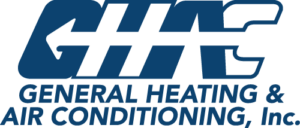No Cool
NO COOL – “No cooling” is the most common call we receive in the summer simply because there are so many issues that will cause an air conditioner to quit cooling. Therefore, there are several factors you should take into consideration to help determine the cause.
POSSIBLE PROBLEM & DESCRIPTION
Thermostat Set Incorrectly
Many “No cool” calls (especially early season) are the result of the thermostat being set incorrectly. Make sure the thermostat “System” switch is set to “Cool” (or “Auto” for auto-change-over thermostat) and the cooling temperature is set lower than the current space temperature. Watch Video
No Power to the Outdoor Unit
Air conditioning systems (except Geo-Thermal units) will have an outdoor unit of some type. In the cooling mode, the compressor should be operating and the outdoor fan should be running. If you cannot hear the compressor running and the fan is not operating, it may not have power. Check the breaker for the air conditioner and make sure that it is not tripped. Watch Video. If the breaker is okay, a qualified service technician should check the system.
Dirty or Restricted Outdoor Coil
If the outdoor unit is operating and the air that is being discharged is very warm or hot, that can indicate low airflow across the outdoor coil. This may be caused by debris build-up on the outdoor coil or other sources of restriction.
Dirty Indoor Coil / Clogged Air Filter
An air conditioner removes heat from the space as it blows air across the indoor coil. A properly operating system should drop the air temperature 15 – 18 deg. F. If the air temperature is very cold (high temperature drop), this can indicate low airflow across the indoor coil which can be the result of a clogged air filter, blocked registers, or a partially frozen indoor coil.
Clogged Drain
Most new air conditioning units have a condensate overflow switch which shuts-off the air conditioner if the drain line becomes clogged to prevent water damage.
Refrigerant Issues – Qualified Technician Recommended
An air conditioner removes heat from the space as it blows air across the indoor coil. A properly operating system should drop the air temperature 15 – 18 deg. F. If the air temperature is not very cool (lower than normal temperature drop), that would likely indicate a problem with the refrigerant charge or the refrigerant circuitry.
Bad Capacitor – Qualified Technician Recommended
Most residential air conditioning units have a starting capacitor for both the compressor and the outdoor fan motor. Many units have a dual-capacitor which combines both in one component. If the starting capacitor goes bad, the motor being controlled will not be able to start. A bad capacitor will often swell or even burst.
Bad Compressor – Qualified Technician Recommended
The compressor in an air conditioner pumps the refrigerant and provides the compression required for cooling to take place. A compressor can have several malfunction conditions which can cause the unit to quit cooling.
A “shorted” compressor will usually cause the breaker to trip every time it tries to start.
A “locked-up” compressor will fail to start. It will often making a brief growling noise and may pull enough amperage to trip the breaker. A common symptom is dimming lights every 5-10 minutes as the compressor tries to start. (A bad start capacitor can cause the same symptoms as a locked-up compressor).
A compressor with “bad valves” will generally start normally but will either produce very little or no compression.
Bad Outdoor Fan Motor – Qualified Technician Recommended
The outdoor fan motor should run any time the compressor is operating in the cooling mode. If the compressor starts but the fan does not, either the motor or its starting capacitor is likely bad.

